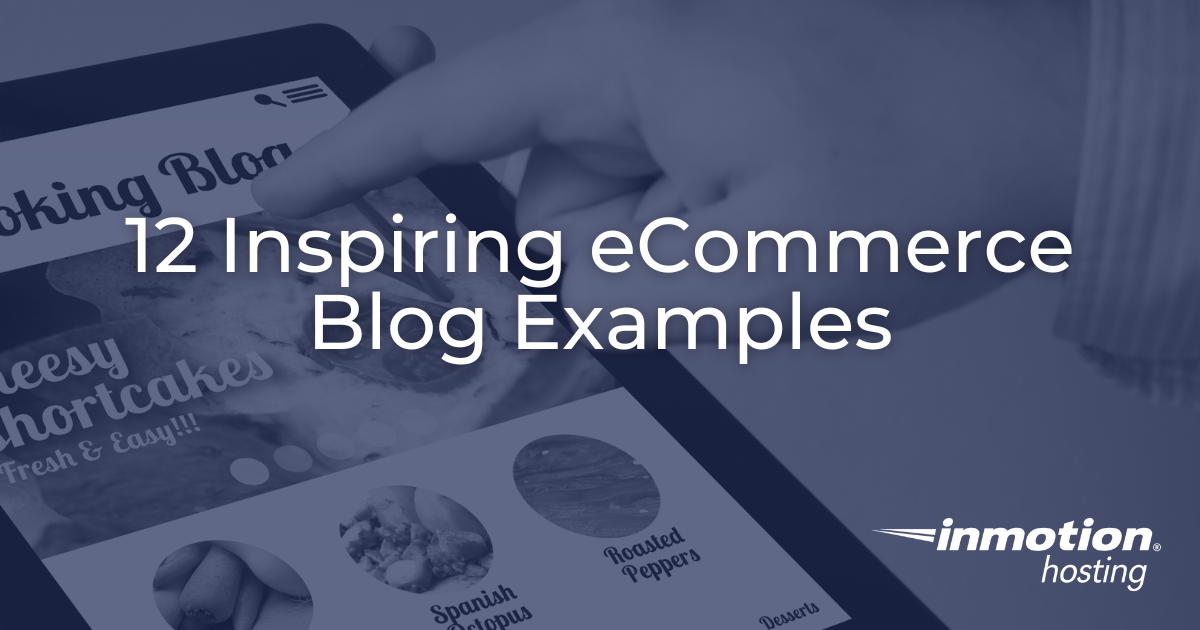
12 eCommerce Blog Examples in
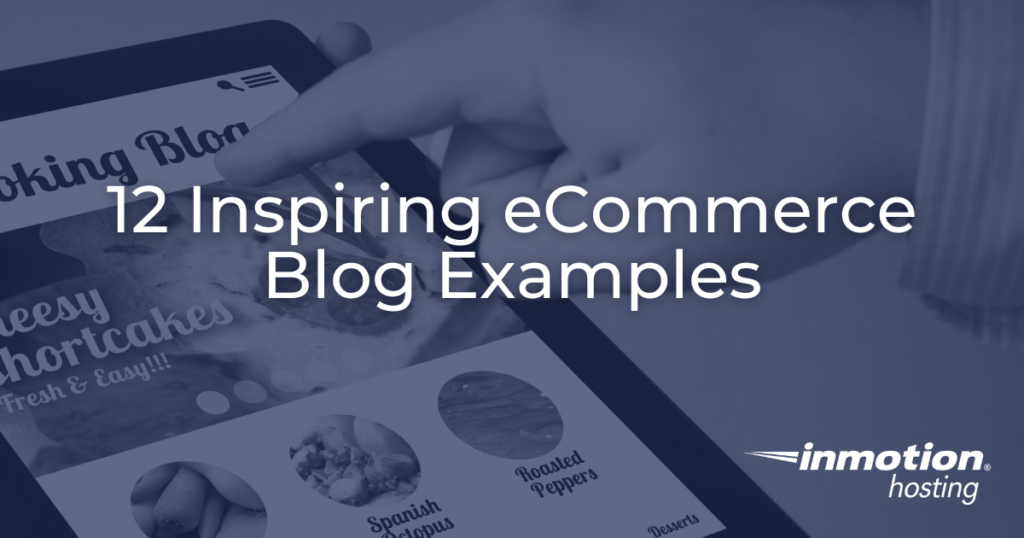
Looking at successful eCommerce blog examples can provide valuable insights into building brand authority, driving traffic, and increasing sales. A well-planned and structured eCommerce blog can establish your online store as a reputable and trusted brand leader while boosting your SEO (Search Engine Optimization) and customer engagement.
There are roughly 12 to 24 million eCommerce stores globally. Nowadays, online retailers can essentially sell anything, from clothes and cakes to software and courses. However, many eCommerce retailers find it challenging to run their blogs successfully.
Successful eCommerce blogs seamlessly incorporate SEO best practices, high-quality content, and careful and selective product inclusion. This guide delves into successful eCommerce blogs, providing insights into eCommerce best practices, strategies, and mistakes to avoid while running an eCommerce blog.
Ready to start your eCommerce blog? Here are twelve inspiring eCommerce blog examples to learn from in 2025.
Product-focused blog examples
Product-focused blogs are eCommerce blogs that solely focus on particular services or products. They provide comprehensive reviews, information, usage guides, and the latest industry updates to inform and educate potential customers.
The following are examples of product-focused blogs:
#1. Kettle & Fire’s recipe blog

Kettle & Fire, a recipe blog, displays recipes and incorporates its products organically into the content. This strategy drives traffic and sales to Kettle & Fire’s website from people looking for healthy recipes, and at the same time promotes their broths to its audience.
Kettle & Fire uses the following key strategies to capture the attention of its potential customers;
Key Elements
- Recipe structure: This blog uses a step-by-step guide form of article while incorporating high-quality images.
- SEO approach: The blog targets long-tail keywords such as “best bone broth recipes”.
- Product integration: Kettle & Fire links products seamlessly in the recipes as shown below:

Takeaway Tips: How To Replicate Their Success
To run a successful eCommerce blog, use Kettle & Fire as your guide. You can imitate their strategies in your eCommerce store by:
- Creating original, well-researched, and high-quality content that naturally features your products.
- Optimizing your site, content, and links for SEO by including relevant keywords.
- Using original and high-quality images and step-by-step guides to foster engagement.
#2. Glossier’s “Into The Gloss”

Glossier’s blog builds website authority through education. The blogs are designed to focus on beauty education while skillfully marketing their products, such as makeup and skincare products.
The Into The Gloss blog implements the following best practices to run its eCommerce blog:
Key Elements
- The blog features case studies and interviews on product use, which is an effective way of marketing their makeup products.
- Into The Gloss blends personal stories and expert advice in their blogs, as shown below:
All great love stories have a great beginning. Mine began with an email. Except, it’s not the kind of love story you’re thinking about. Mine is of great friendship with my best friend, Daniela Morosini, who you might know from her reporting at The Business of Beauty. The year was 2019, and I was working at New York’s The Cut as a social media editor and moonlighting as a beauty writer. Kathleen Hou, my then editor and now the Beauty Director at Elle, passed along Daniela’s name for Why Is Your Skin So Good, my column devoted to uncovering people’s skincare secrets. On October 8, I wrote to Daniela, “Hope you’re well. Could you tell me more about your skincare routine + beauty philosophy for consideration? Into The Gloss

To create a high-traffic beauty blog in 2025, power it with WordPress-optimized hosting, featuring built-in security and lightning-fast speeds.
#3. Nike Journal

Nike’s blog drives engagement through athletes’ journeys and storytelling while skillfully marketing its products to its audience. Their blog promotes their products and tells stories about athletes, major sporting events, and fitness enthusiasts, creating a deep emotional connection with their audience.
Nike’s blog uses the following eCommerce best practices:
Key Elements
- Use of high-quality visuals, including videos and images, to enhance the user experience and customer engagement.
- Nike’s blog posts are optimized for SEO, targeting high-intent keywords such as “best running shoes for marathons.” This attracts users who have a strong intention to purchase marathon shoes, resulting in a greater likelihood of conversion.
- Nike’s blog features stories of athletes who wear Nike gear, showcasing their product in real-life environments, as shown below:

#4. BrewDog Blog
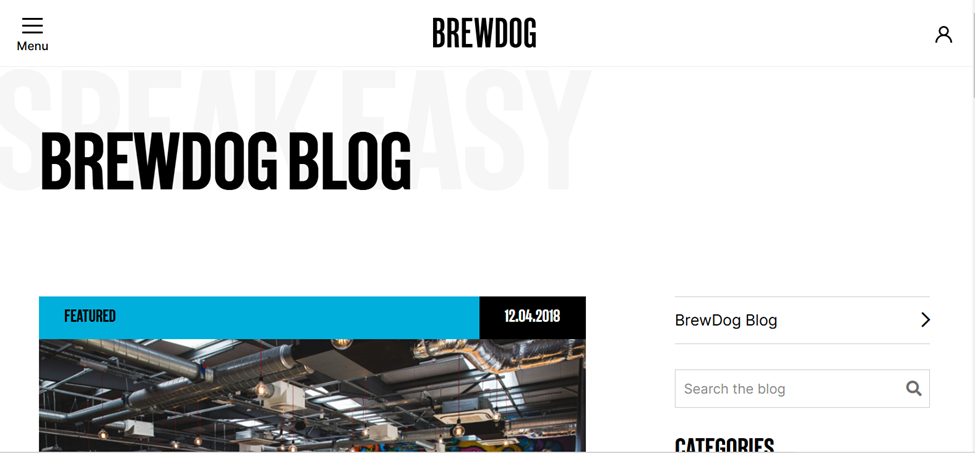
BrewDog’s eCommerce blog strategy is to combine education with product promotion. The educational content informs and engages the readers while simultaneously driving product sales.
It engages its potential audience by informing them about beer culture, brewing techniques, and tasting notes, while carefully promoting its products.
The key elements used in BrewDog’s blog include;
Key Elements
- The blog focuses on educational product content like beer pairing tips, beer guides, and flavor breakdowns, while organically incorporating BrewDog’s products.
Lifestyle Blog Examples
Unlike product-focused eCommerce blogs, lifestyle eCommerce blogs share content about different aspects of daily life, such as;
- Travel
- Health
- Fashion
- Relationships
- Personal development
Generally, these blogs provide readers with personal insights, experiences, inspiration, and advice while promoting their services and products.
Here are some of the best examples of eCommerce blogs focusing on lifestyle content:
#5. Mad Happy’s “The Local Optimist”

Mad Happy’s blog is centered on clothing. The brand advocates for optimism, which is expressed through clothing and experiential retail globally. Aside from fashion, this eCommerce blog is dedicated to fostering mental health support and awareness.
With this in mind, the brand publishes the “Local Optimist” magazine, which focuses on topics related to well-being and personal development. Additionally, the Mad Happy blog often features a weekly podcast with diverse guests discussing mental health topics.
Mad Happy uses the following eCommerce best practices to establish itself in the lifestyle industry:
Key Elements
- Mad Happy creates content about topics such as mindfulness, wellness, and community stories to engage readers.
- This eCommerce blog exudes an authentic, relatable, and uplifting brand voice.
- It makes use of guest posts from professionals to prompt audience engagement.
#6. Away’s “Here Magazine”

Away’s eCommerce blog, Here Magazine, serves as an independent editorial platform showcasing travel stories. Away’s blog does not sell its products directly to its audience, but focuses on immersive storytelling, associating the brand with adventures, travel, and exploration.
Some of the eCommerce blog best practices incorporated into Away’s blog include the following:
Key Elements
- Away’s blog features high-quality travel guides and personal narratives from travel experts, ensuring the blog meets high editorial standards.
- Away’s blog posts are created to target travelers who value both aesthetics and experience, positioning Away as a lifestyle brand.
- Although Away’s blog functions as a standalone publication, it skillfully markets Away’s products by connecting them with functional and stylish travel solutions.
- High-quality and original photos inspire users and reinforce Away’s brand identity, as shown below:

If you want to expand your lifestyle blog in 2025, scale your content operations with reliable hosting infrastructure.
#7. Zen Habits
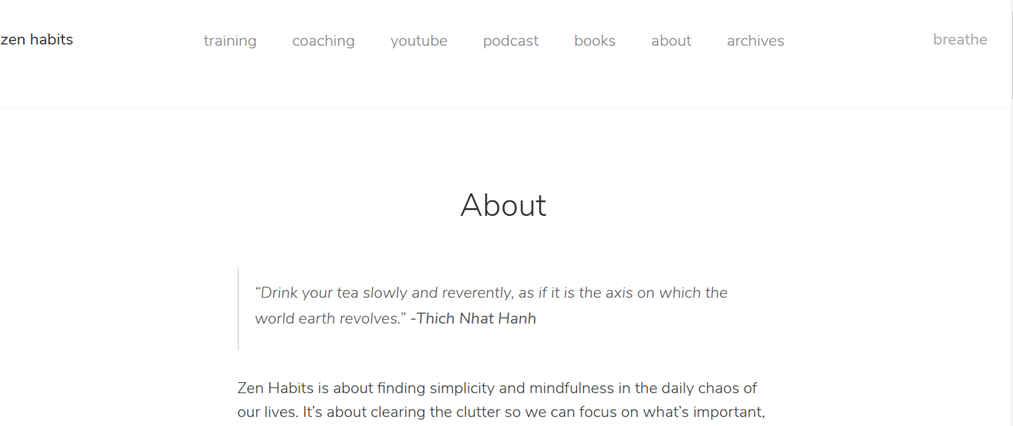
Founded by Leo Babauta, the Zen Habits eCommerce blog sells mindful lifestyles through content focused on self-improvement. Instead of focusing on selling his products, Leo Babauta produces educational and value-driven content, leading his audience towards courses, books, and premium memberships.
Here are the key elements of Zen Habit’s eCommerce blog:
Key Elements
- Zen Habits’s blog offers comprehensive posts on productivity, mindfulness, and simplicity, creating an engaged readership.
- Uses SEO-optimized content to drive traffic, leading to a productive long-term sales funnel.
- Instead of overselling, Leo subtly promotes his products using relevant blog topics to encourage readers to purchase his books, courses, and memberships.
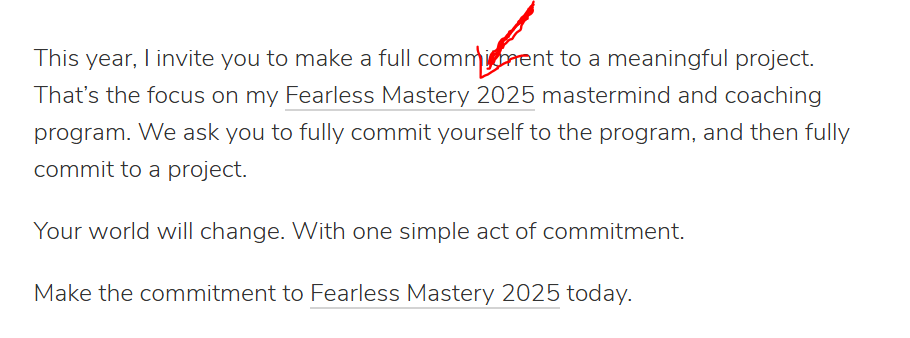
#8. The Minimalists

The Minimalists is a unique eCommerce blog that promotes simple living while organically integrating products into their blog posts. This blog was created by Ryan Nicodemus and Joshua Fields Milburn. It promotes a philosophy that attracts readers and entices them to purchase their books, courses, and films, as well as attend their live events.
Key Elements
- The Minimalists blog features case studies and personal experiences of minimalists. The content organically references their documentary and books.
- Each blog post links to a related book, film, or workshop, making conversions feel natural.
- The Minimalists build strong community engagement through events, newsletters, and podcasts, which organically drive sales to their eCommerce products.
Educational Blog Examples
Educational eCommerce blogs provide valuable insights to students, educators, and enthusiasts, providing solutions in educational technology, teaching strategies, and policy discussions. Here are some examples of eCommerce educational blogs;
#9. REI’s Blog (Co-op Journal)

REI’s eCommerce blog blends educational content with product promotions as its eCommerce strategy. Co-op Journal offers educational insights through high-value content that seamlessly integrates relevant products and services.
REI’s blog serves outdoor enthusiasts by providing gear reviews, expert guides, and travel stories. Key elements that set this eCommerce blog apart include the following:
Key Elements
- REI’s blog invites experts in outdoor activities to write blog posts (guest blogging). This positions REI’s brand as credible, reliable, and authoritative concerning outdoor activities.
- This blog builds its community through reader engagement, storytelling, and shared outdoor experiences.
- Extensive coverage of outdoor activities such as cycling, hiking, and camping. The blog posts naturally link to related REI eCommerce products.

#10. Bulletproof Blog
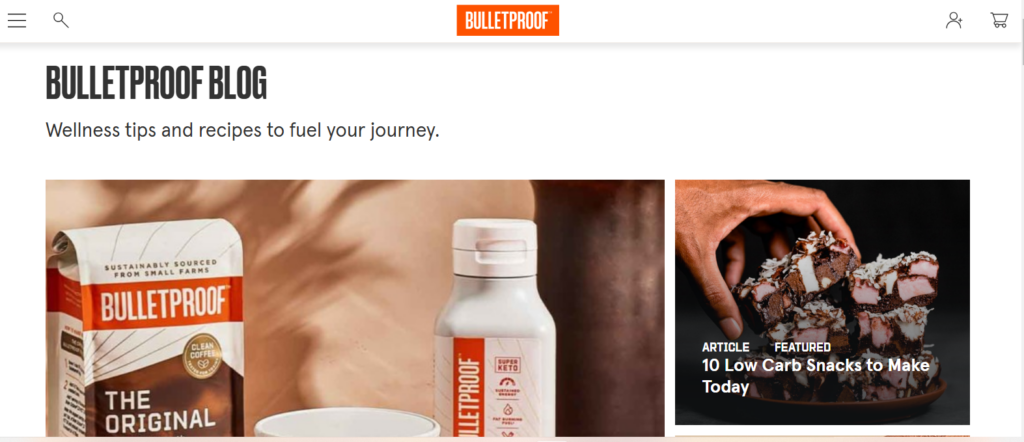
The Bulletproof Blog establishes authority in its field through well-researched, informative content. This blog was founded by Dave Asprey, who provides detailed research on topics such as wellness, nutrition, and biohacking.
Bulletproof blog uses professional insights and scientific studies to educate and inform its readers while promoting their products, such as coffee, MCT (Medium-chain triglyceride) oil, and collagen protein. eCommerce best practices used in the blog include;
Key Elements
- Posts in the Bulletproof Blog include medical professional citations, peer-reviewed studies, and advice from health experts.
- The blog offers comprehensive whitepapers, guides, and research-backed articles to help the audience make personalised and prudent health choices.
- The Bulletproof Blog covers technical content surrounding brain function, mitochondrial health, and ketosis, attracting readers globally.

Choosing a hosting provider for your educational blog in 2025 can be challenging, particularly as there are a lot of options out there. InMotion Hosting is a good option for reliability, scalability, and overall performance.
#11. Edutopia

Edutopia is centered on evidence-based educational content. This eCommerce blog was founded by the George Lucas Educational Foundation, making it a leading library for educators. It provides research-based content, real-world classroom implementations, and teaching strategies.
Edutopia’s eCommerce blog supports professionals working in K-12 education by sharing innovative teaching strategies, professional interviews with educators, and case studies.
Key Elements
- Edutopia articles provide evidence-based teaching methods, classroom strategies, and discussions around cognitive science.
- Blog posts are supported by research from education experts and classroom experiments.
- Edutopia offers free guides, interactive tools, and lesson plans to help teachers apply the best methods in their classrooms.
#12. EdSurge
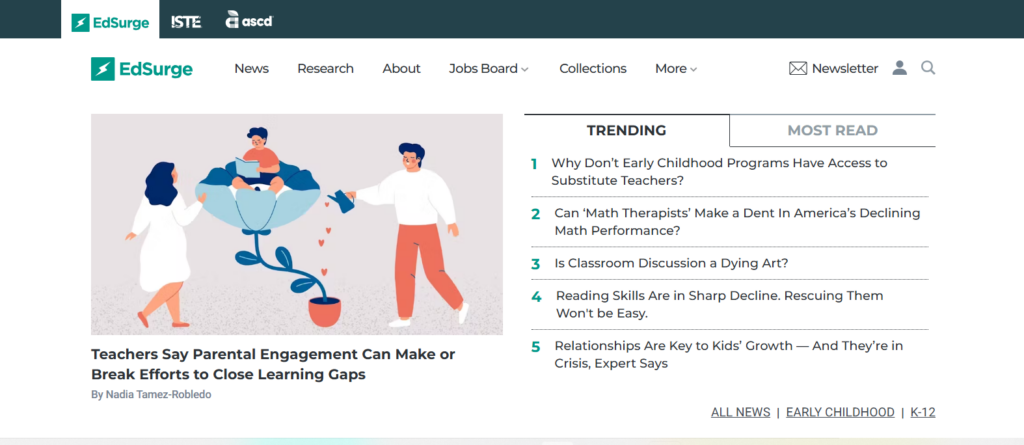
EdSurge is a leading eCommerce educational blog that offers detailed reporting on the latest trends, innovation, and research in education technology (EdTech). This platform is largely used by school administrators, educators, and EdTech companies to keep abreast of the latest learning tools, digital transformations, and policies in education.
Here are some of the notable key elements used in EdSurge as a leading eCommerce blog example;
Key Elements
- The blog covers topics on AI (Artificial Intelligence) in education, digital learning strategies, and the best ways to use EdTech tools.
- EdSurge’s posts are research-backed; industry data and case studies are used to engage the readers.
- EdSurge provides whitepapers, webinars, and thought leadership pieces to help educators and EdTech companies make informed decisions.
Implementation Guide: Lessons From These Examples
Successful eCommerce blogs are carefully planned, optimized, and strategically executed to achieve the best outcomes. Learning from well-performing eCommerce blogs can help you restructure your blog’s content strategy, technical setup, and resource allocation to maximize results.
#1. Technical Setup Considerations
A solid technical foundation is the cornerstone of any successful eCommerce blog. This practice ensures fast load times, easy user experience, and mobile responsiveness. Here’s what you need to consider for the technical setup of a blog:
Choosing the right hosting provider. Hosting plays a significant role in ensuring efficient website performance, robust security against cyber threats, and capacity for supporting spikes in traffic.
73% of mobile internet users say they’ve encountered a website that loaded too slowly. To avoid this, invest in a reliable hosting provider for your eCommerce blog in 2025 and beyond.
CMS and blogging platform selection. A content management system (CMS) helps you plan and publish content easily. For instance;
A case in point is Glossier’s “Into The Gloss” blog, which integrates seamlessly with their Shopify store to enhance user experience.
Mobile optimization and user experience. Mobile optimization is key because most online shopping is done on mobile devices. You can make your blog mobile-friendly by doing the following;
- Optimize your website images and videos for mobile to reduce page load speed.
- Use a mobile-responsive design.
- Implement easy navigation for better user experiences.
#2. Content Planning Strategies
Content planning is essential for ensuring your eCommerce blog remains relevant, engaging, and up-to-date with the latest SEO best practices. Here’s how you can implement an effective content planning strategy for your next eCommerce blog:
Define your site content pillars. Many successful eCommerce blogs use content pillars to help readers navigate through their posts. Examples of content pillars from the above eCommerce blog examples include;
| Content Pillar | Example blog | Purpose |
|---|---|---|
| Product-focused content | Kettle & Fire’s Recipe blog | Educate customers on how to use products. |
| Lifestyle content | Away’s “Here Magazine” | Build a strong brand identity beyond simply selling products. |
| Educational content | REI’s blog | Establish authority by providing value through expert advice. |
SEO and keyword optimization. “Getting a quality website is not an expense but rather an investment.” – Dr. Christopher Dayagdag, CEO of Marketlink Web Solutions.
The leading eCommerce blogs concentrate heavily on SEO optimization to attain a higher position in the Google ranking. Here are SEO best practices you should incorporate in your eCommerce blog;
SEO Best Practices
- Use of long-tail keywords
- Optimize your website for local SEO through meta descriptions, alt texts, high-quality images, and title tags for higher CTR (click-through rates).
- Implement internal linking in blogs to refer users to related articles or posts.
#3. Resource Allocation Tips (Based on What Worked for the Example Brands)
Creating quality and premium blogs requires strategic budgeting and sufficient resource management. The table below highlights budget estimations of content creation based on business types:
Budgeting for blog content creation.
| Business type | Content budget | Key resource needs |
|---|---|---|
| Small business | $500–$2,000/month | Freelance writers, basic SEO tools |
| Mid-sized eCommerce brand | $2,000–$10,000/month | In-house content team, advanced SEO tools, multimedia production |
| Enterprise-level business | $10,000+/month | Editorial team, high-end content management tools, paid promotions |
Using automation and content management tools.
| Tool type | Recommended tool | Purpose |
|---|---|---|
| SEO research | Ahrefs, SEMrush | Keyword research, competitor analysis |
| Content management | WordPress, Shopify Blog | Blog publishing and design |
| Graphic design | Canva, Adobe Photoshop | Creating engaging visuals |
Common Success Patterns: Analyzing What Works Across Successful eCommerce Blogs
Successful eCommerce blogs adhere to a particular pattern that builds trust, drives engagement, and boosts conversions. By examining these patterns, both small and mid-size businesses can optimize their marketing approach, content strategy, technical setup, and resource allocation to achieve the best results.
#1. Content Types That Convert
Not all content produced leads to higher conversions. Higher-performing eCommerce blogs use a certain format that entices, informs, educates, and engages the audience. Some of these content types include;
- Product-focused content: tailored to drive conversions.
- Educational content: builds trust and authority while promoting eCommerce products.
#2. Technical Requirements for a High-Performing eCommerce Blog
A successful eCommerce blog does not rely solely on content. It needs a robust technical foundation for scalability, SEO, and user experience.
Some of the technical requirements for high-performing eCommerce blogs include:
- SEO-optimized site structure
- Hosting and security considerations
- Easy navigation and search features
#3. Marketing Integration: Driving Traffic and Conversions
Marketing is a significant factor in lead generation, site visibility, and traffic generation. Some effective marketing strategies you should implement in your eCommerce blog include:
- Featured snippets optimization
- Use of user-generated content
- Use of eBooks, discounts, and free guides to drive traffic to your eCommerce blog
Conclusion
A successful eCommerce blog offers high-value content that is genuinely useful to its readers. By providing valuable content to potential customers, eCommerce blogs are tools for engagement, brand growth, and conversions. After analyzing a range of high-quality eCommerce blog examples across various industries, there are some clear strategies for creating a productive eCommerce blog in 2025.
One of the key takeaways from the eCommerce blog examples is that organically integrating products and services into blog content is a significant way to increase conversions, as seen in the Kettle & Fire and Glossier blogs. Your blog can establish brand loyalty using content that aligns with your brand voice. For instance, Mad Happy and Away’s “Here Magazine” builds authority and trust through original, well-researched, and expert-backed posts, aligning with their brand story.
Looking to start your eCommerce blog in 2025? Here are the steps to consider;
- Select the type of blog and its goal, e.g., lifestyle, product-focused, etc.
- Conduct thorough research and plan your topics.
- Ensure your blog is secure, fast, and mobile-friendly, with strong SEO foundations.
- Perform marketing campaigns through different social media channels.
- Regularly review your site statistics.
Improve the performance and security of your store with specialized eCommerce Hosting. Get faster speeds for your online store with NVMe storage, server protection, dedicated resources, and optimization tools.
99.99% Uptime
Free SSL
Dedicated IP Address
Managed Server
eCommerce Hosting







